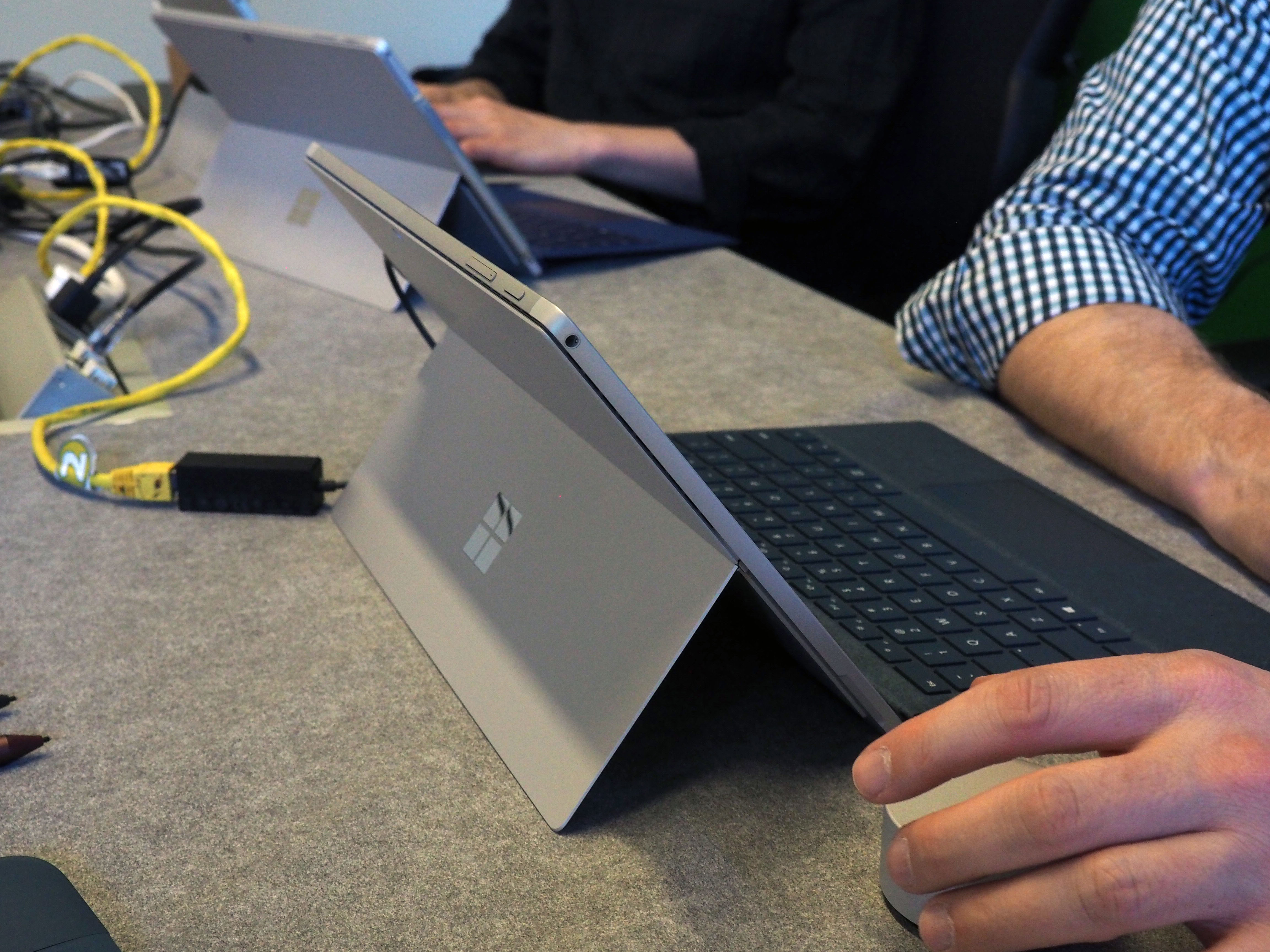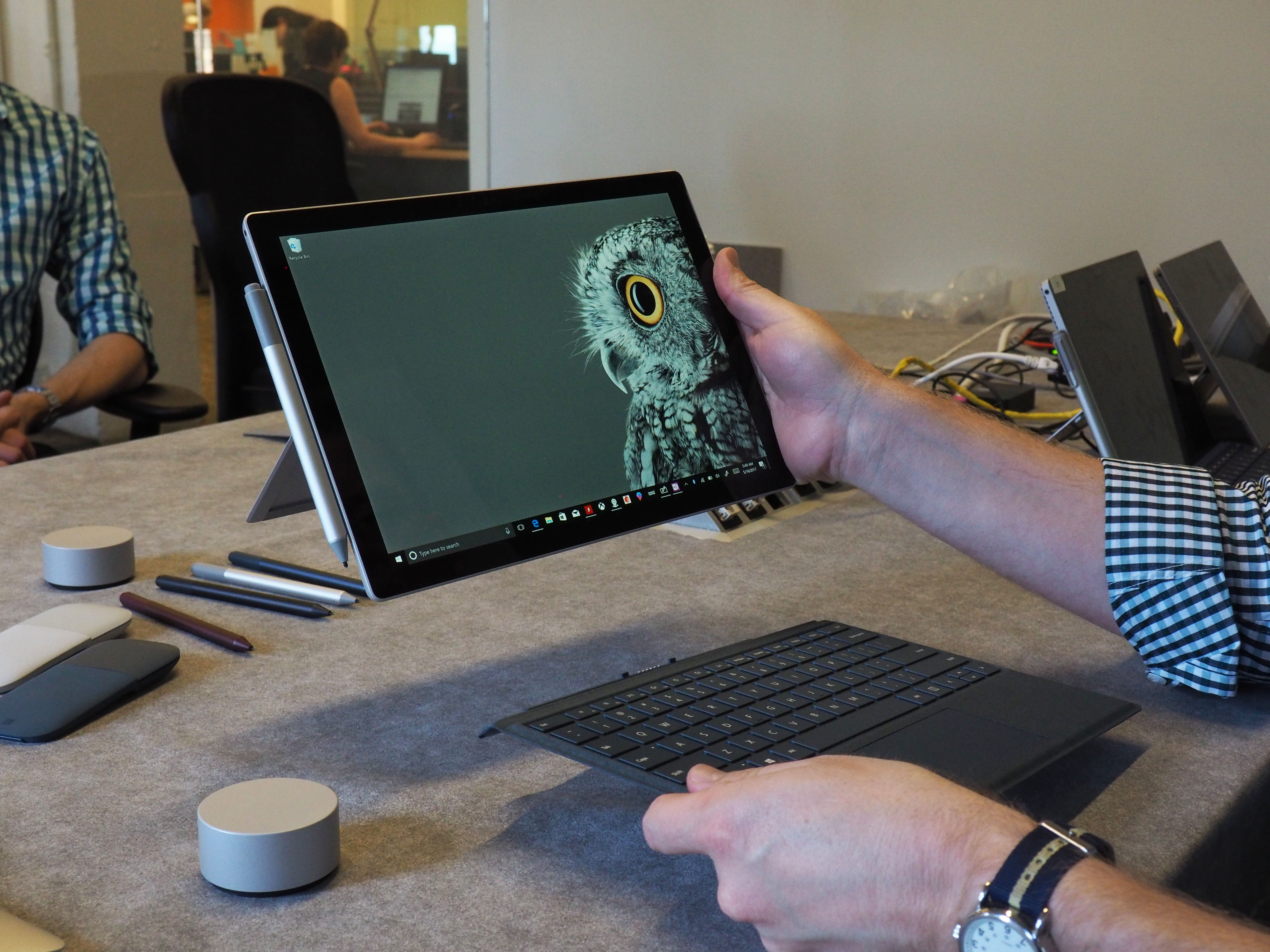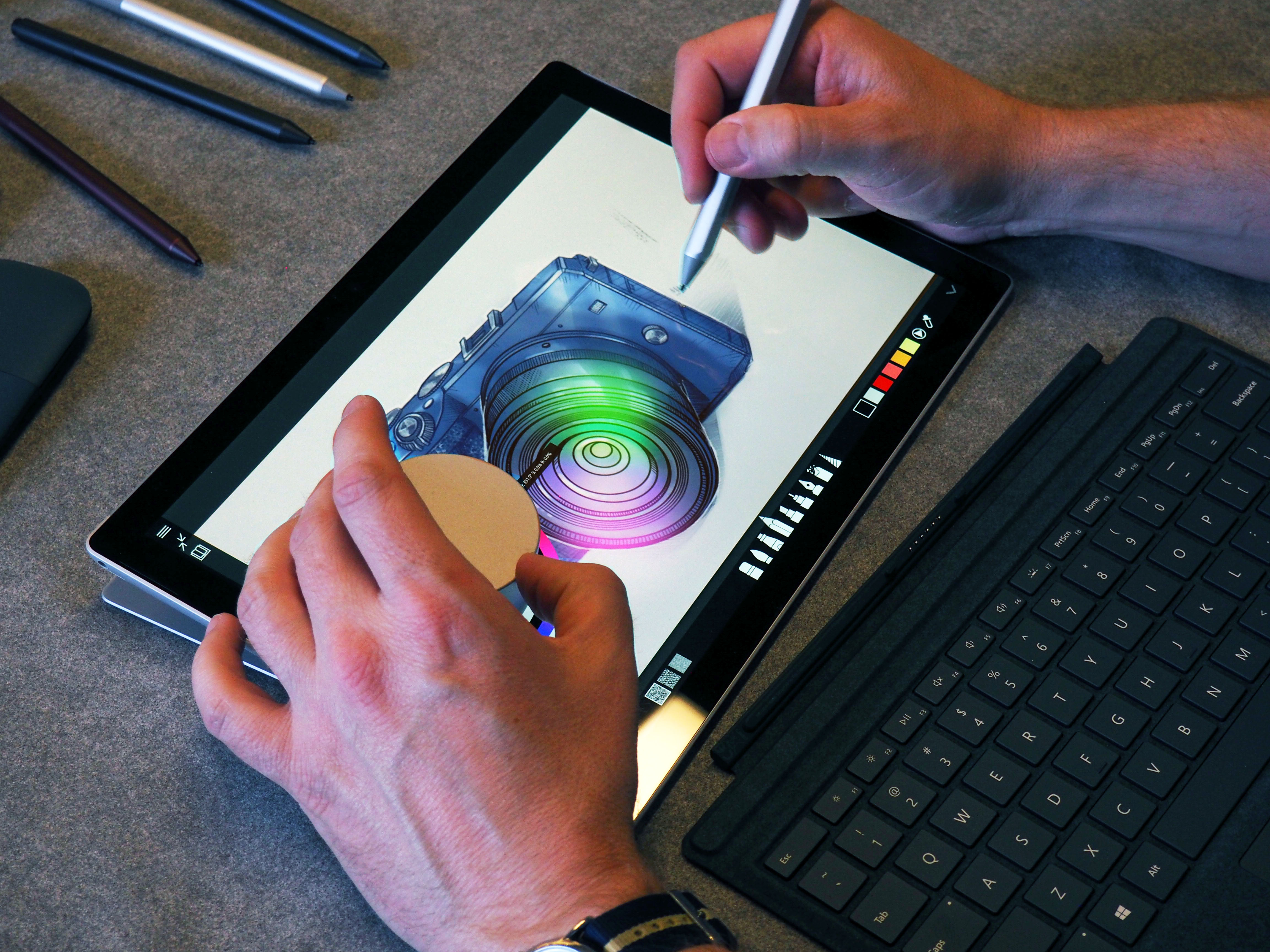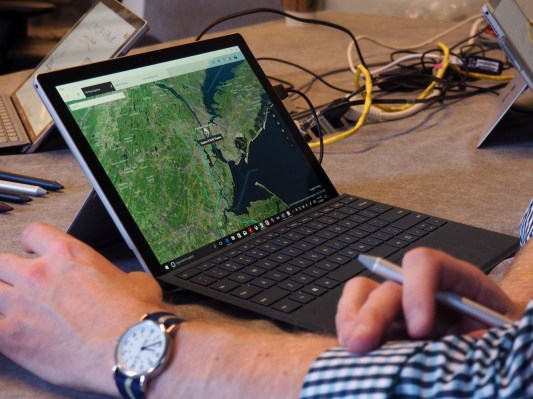Microsoft says it didn’t mean to do a “head fake” when it told the press that this week’s big event in Shanghai wouldn’t center around the launch of the Surface Pro 5. Sure, the company was telling the truth, but that’s really a technicality, because the new Surface Pro (full stop) is really the Surface Pro 5. It’s the clear successor to 2015’s Pro 4; the company just dropped the name, it claims, for the sake of simplicity.
The new version of the device has some key spec bumps. There’s an impressive 13.5 hours of battery life, a new silent fanless option, improvement to the pen and faster processing. Really though, the convertible looks almost identical to its predecessor, to the point where you’d have to see two side by side to note that the new version is thinner and lighter.
As for why there’s no Surface 5, as the company slyly noted ahead of launch? That has to do, in part, with the fact that the Surface family has grown a fair bit over the last couple of years, including the notable recent additions of the all-in-one Surface Studio, the interactive white board Surface Hub and the Surface Laptop, which launched a couple of weeks back as part of the company’s big education unveiling.

“A big part for us is just getting to a simplicity of approach in terms of how we talk about our products and not make it hard for our customers to remember all of these products,” the company’s Yusuf Mehdi, Corporate Vice President, Devices and Services told TechCrunch during a recent interview. “We want customers to walk into a store and know what the options are. And that’s just a simple way to do it.”
It will complicate things before it simplifies them of course, but testing the water is what the Surface line has been about since the beginning. It wasn’t all that long ago that much of the press was writing off the Surface line as little more than a proof of concept for the company — a way to demonstrate to consumers and manufacturers alike what could be accomplished with Windows 10.
When pressed, the company will admit that sort of real-world beta testing was definitely a part of what brought the line to life in the first place. “We’ve always done surface for three reasons,” says Mehdi. “We’ve done it to pioneer and show the best of Microsoft to individuals — hardware, software and apps. The second reason is to expand the category. And the last is to run a great business in its own right.”
For that reason, the line has come into its own in a very public way. It wasn’t until around the Surface 3 that the Pro made the leap from a speced-out tablet to a real potential laptop replacement, Mehdi explains, referring to conversation he’d had with Panos Panay, the goateed CVP who has grown into the face of the Surface line, courtesy of some very… impassioned deliveries at Microsoft keynotes. However you might feel about the guy, there’s little room for argument that he feels far more passionately about thing like hinges and keyboard covers than the vast majority of the public — and frankly, that’s exactly the sort of humanizing the company has often lacked in its front-facing product pitches.

It’s hard to say precisely what role the company anticipated the Pro would have in the larger Surface line. Microsoft gives off the impression that the company saw it coming since the beginning, but it’s hard to shake the feeling that it was somewhat surprised by the momentum the Surface built after a slow start. In earlier days, the Surface was more akin to Apple iPad Pro — a capable tablet that can do some heavy lifting… but at the end of the day, still a tablet.
The Pro 3 was apparently the point when the proverbial Pinocchio became a real boy, and Microsoft began to feel fully confident that the Pro was a legit laptop replacement.
“Going back to the Surface 3, we talked about the device as the tablet that can replace your laptop,” says Mehdi. “We weren’t sure if we were ready to position it as a laptop, but now, with the new features, combined with the fact that consumer demand has evolved to look at these 2-in-1s a laptop replacements, we’re really squarely going into that marketplace.”
The jump from Pro 5 to straight-up Surface Pro feels mostly like a minor evolution. But the company is positioning it as much more. “I believe this is a significant release,” says Mehdi. “It will change the way people use their Surface Pro.”
That talk is likely due in part to the two years between devices and the fact that the company feels the device is doing more to cement the product’s needs as the aforementioned laptop replacement. And in all fairness, the market wasn’t really ready to consider the 2-in-1 category as a legit replacement for a laptop when the first Surface rolled into town. So it’s no surprise, really that the Surface wasn’t ready to deliver.

Certainly the specs are there now. And the keyboard is a step toward that. Though the company is going to eat directly into some of that market share with its own recently launched Surface Laptop. As it stands, the Pro line serves those who want a little bit of everything the Surface line has to offer (while not delivering on the full promise of its more targeted siblings).
For those who want to type, there’s the keyboard cover. For those who want to create, there’s Dial and pen capabilities and a case that will rotate into a horizontal position, so you can draw on the canvas the way you did with the Surface Studio. With a starting price of $799 (a price that, weirdly, doesn’t include the pen), it’s also $200 less than the Surface Laptop, which helps lend legitimacy to the notion that it’s the most mainstream of the company’s Surface offerings.
